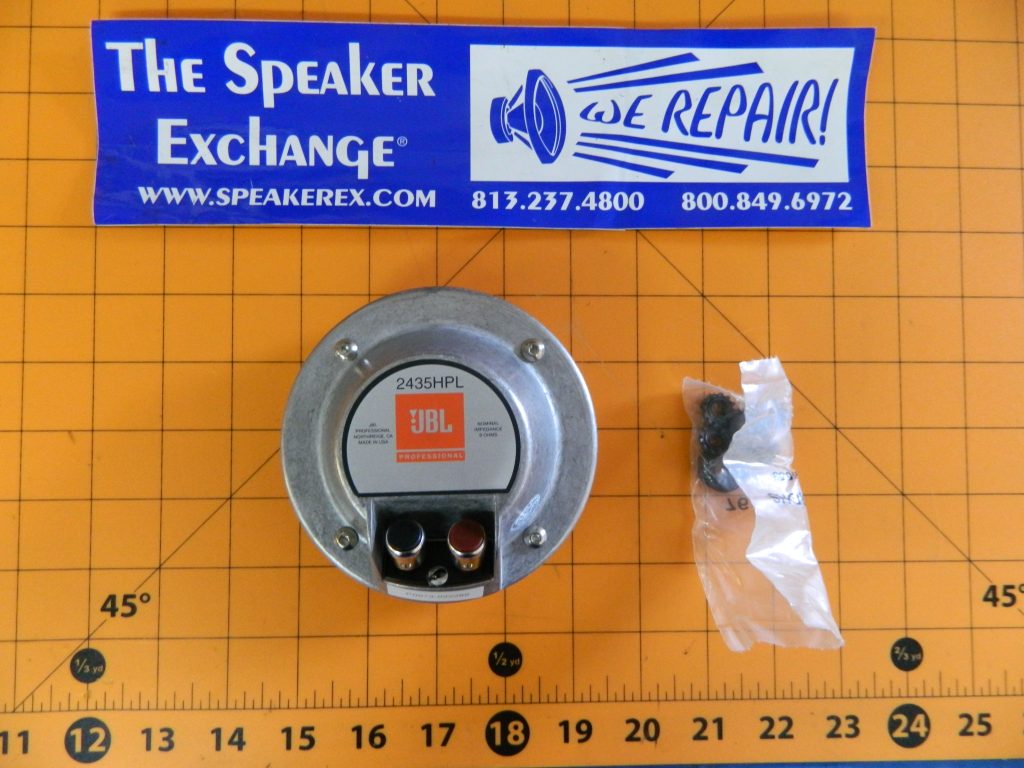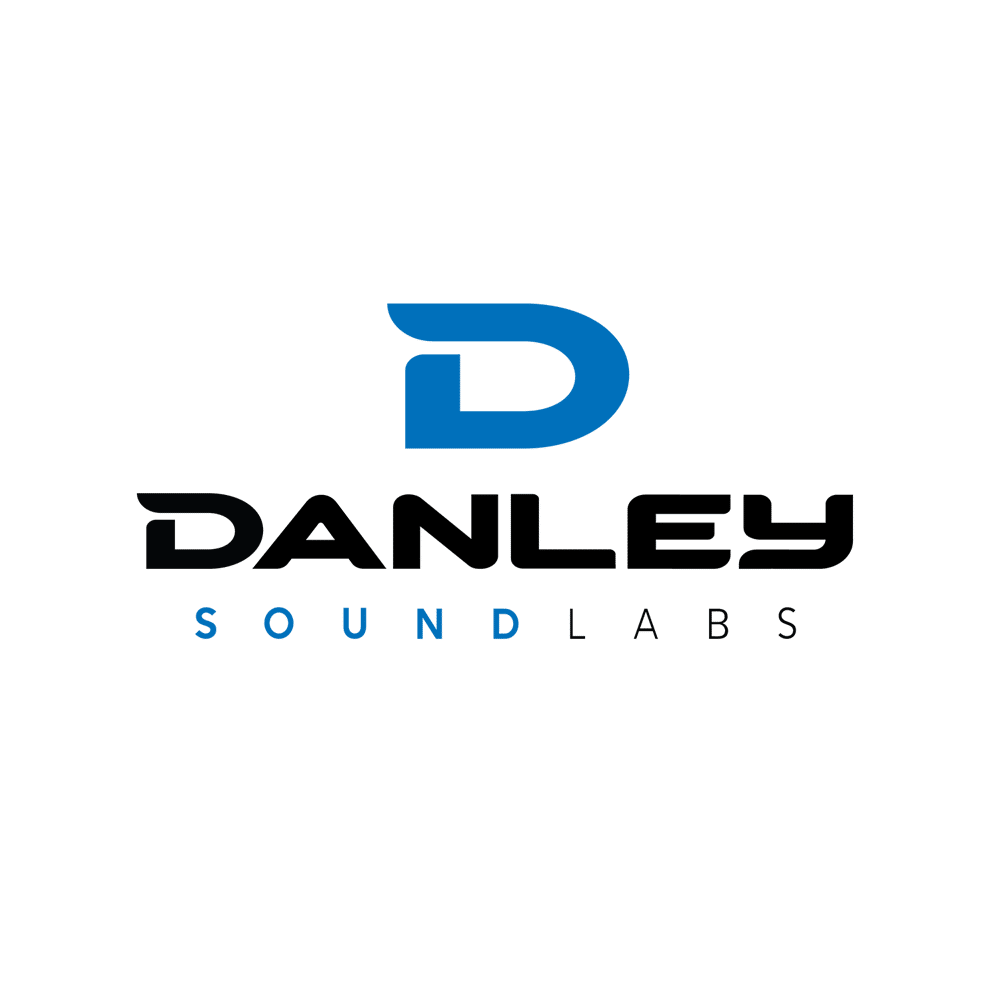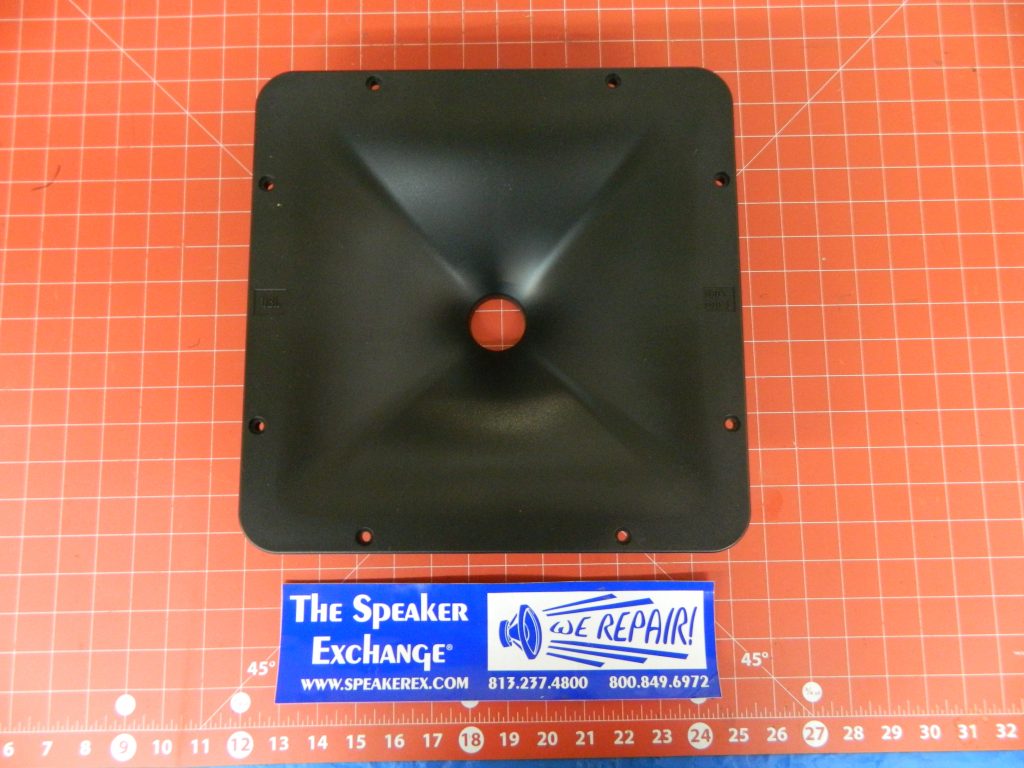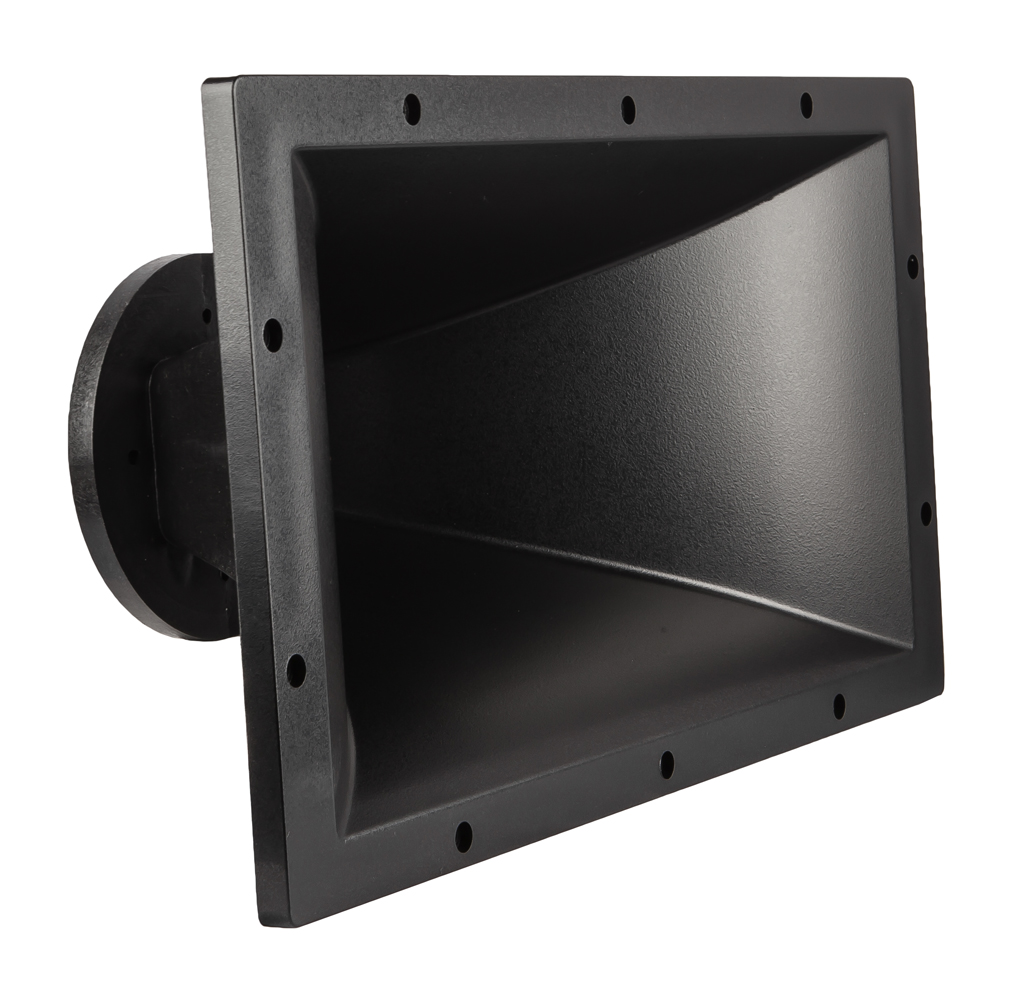From my very recent awareness of the acoustical mechanism of critical distance it does appear that my assumption was correct that horn (source) directivity does at least has some quantifiable impact on the direct vs. reflected sound ratio.
https://en.wikipedia.org/wiki/Critical_distance
What led me to that assumption were mostly two things: Horn directivity and listening distance. For example, if the horn were a ~ 16" JMLC AH425-which due to its rapidly narrowing angular coverage at higher frequencies, has been criticized as a "head in vise" experience by some listeners-the wavefront (if that is an appropriate term) is so sharply focused, perhaps also even in the lower midrange, that the listener is getting mostly direct rather than reflected (reverberant) sound.
And second that the listener might be more likely to get even more direct sound if located closer to between those relatively high directivity speakers, and which would likely be so if the speakers and I were located in an equilateral triangle?
OTOH, though I don't see how, given the 425 horn's beamy directivity, to what extent might toeing the speakers in or out increase reflected sound-and create a palpable sensation of spaciousness?
Of course, due to my room size and dimensions, the corner speaker placement which Art Welter had recommended after evaluating my apartment's building plans, makes equilateral triangle placement less than user comfortable since if the center of the speakers can only be ~ 8 ft apart then I would be obligated to sit only that far from them, rather than the preferred 11 ft.
Referring to the above video in post 33 (click on the * icon in the Youtube player to reduce playback speed), while there's no way to truly evaluate Gary's room, given the apparent length of his projection screen, the center to center distance between his speakers looks to be at least 9 ft, though his friends on that sofa seem at least 12 ft away.
In any case, do not Gary's 425 horns focus the highs to lower midrange so much that any toeing (out?) angle will produce little if any spacious sound in those bandwidths? Thus, my thoughts about which constant directivity horn.
If yes, then would not a constant directivity horn be a better choice for my situation? But if so which?

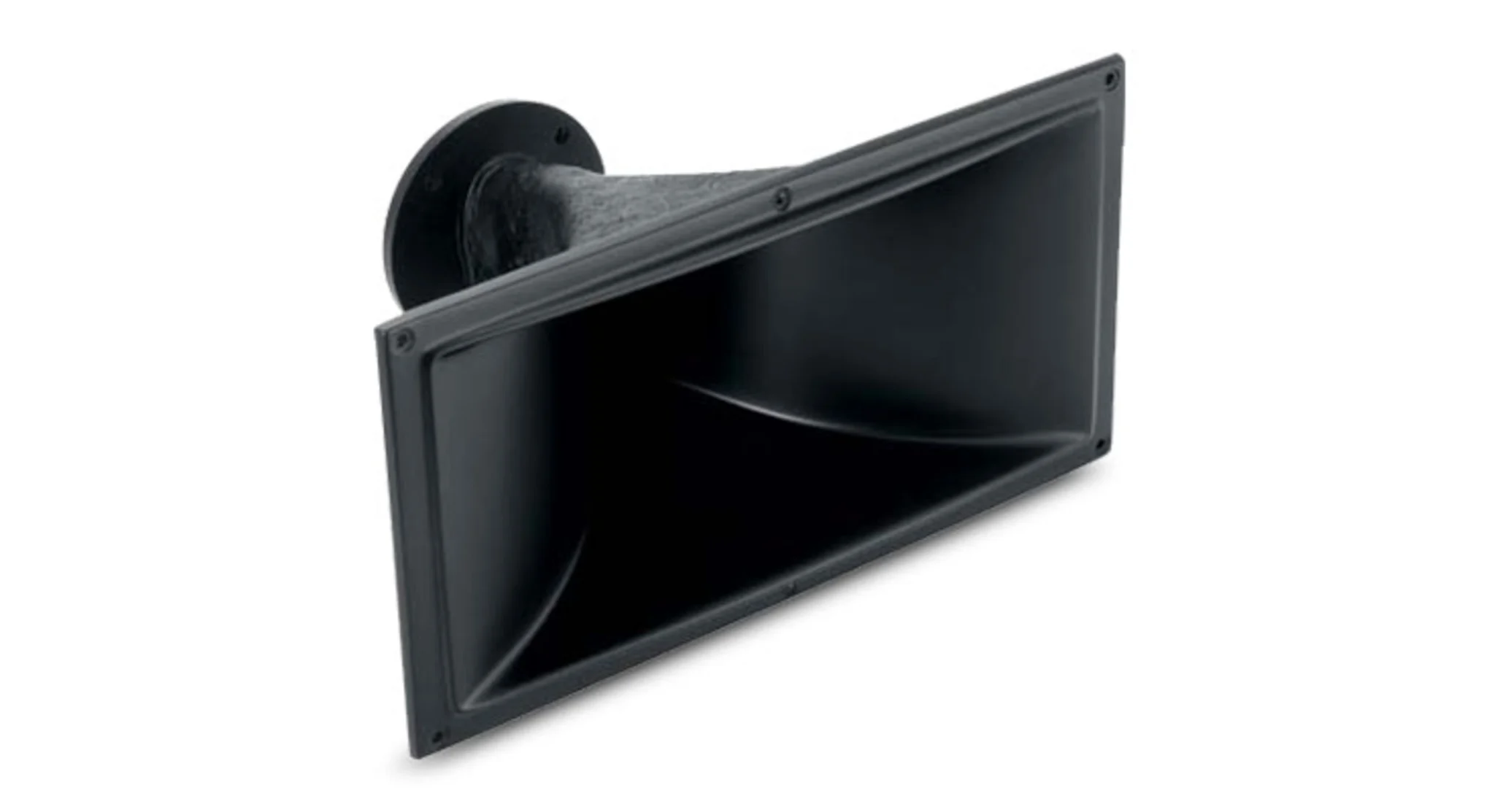
 jblpro.com
jblpro.com

 reconingspeakers.com
reconingspeakers.com

 bcspeakers.com
bcspeakers.com
 www.diyaudio.com
www.diyaudio.com
Here’s a project which apparently ended happily with the JBL M2 horn in a two way with sealed 15”.

 www.audiosciencereview.com
www.audiosciencereview.com
And the Klipsch K510 which Cask05 had recommended.
https://www.diyaudio.com/community/...ver-that-can-reach-500-hz.321521/post-8022282
and with the added “mumps” mod to reduce diffraction.
However, assuming the "mumped" K510 horn is free of it, would all of above horns except Troy's suffer from diffraction problems?
Otherwise, for my 15" sealed midwoofers and 23 ft x 11 ft corner, which horn (s) might you recommend?
https://en.wikipedia.org/wiki/Critical_distance
What led me to that assumption were mostly two things: Horn directivity and listening distance. For example, if the horn were a ~ 16" JMLC AH425-which due to its rapidly narrowing angular coverage at higher frequencies, has been criticized as a "head in vise" experience by some listeners-the wavefront (if that is an appropriate term) is so sharply focused, perhaps also even in the lower midrange, that the listener is getting mostly direct rather than reflected (reverberant) sound.
And second that the listener might be more likely to get even more direct sound if located closer to between those relatively high directivity speakers, and which would likely be so if the speakers and I were located in an equilateral triangle?
OTOH, though I don't see how, given the 425 horn's beamy directivity, to what extent might toeing the speakers in or out increase reflected sound-and create a palpable sensation of spaciousness?
Of course, due to my room size and dimensions, the corner speaker placement which Art Welter had recommended after evaluating my apartment's building plans, makes equilateral triangle placement less than user comfortable since if the center of the speakers can only be ~ 8 ft apart then I would be obligated to sit only that far from them, rather than the preferred 11 ft.
Referring to the above video in post 33 (click on the * icon in the Youtube player to reduce playback speed), while there's no way to truly evaluate Gary's room, given the apparent length of his projection screen, the center to center distance between his speakers looks to be at least 9 ft, though his friends on that sofa seem at least 12 ft away.
In any case, do not Gary's 425 horns focus the highs to lower midrange so much that any toeing (out?) angle will produce little if any spacious sound in those bandwidths? Thus, my thoughts about which constant directivity horn.
If yes, then would not a constant directivity horn be a better choice for my situation? But if so which?


JBL Professional HM3950-SLF
HM3950-SLF Ideal for sound reproduction in small, medium and large-size environments. Several mo...
 jblpro.com
jblpro.com

JBL M2 Horn Lens 5025594 - The Speaker Exchange
Brand New Genuine JBL M2 Horn Lens #5025594. It is normal for there so be some slight mold imperfections on the mounting flange.
ME90 - Horns - B&C Speakers
Any B&C ME90 horn users out there?
https://www.parts-express.com/B-C-ME90-1.4-Constant-Directivity-Horn-80x60-4-Bolt-294-626?quantity=1 There‘s a used pair on a local classified for cheap……worth grabbing to see how they play?…..I like the dispersion pattern for my family room which has a a ramp ceiling from 8 to 12ft.
Here’s a project which apparently ended happily with the JBL M2 horn in a two way with sealed 15”.

JBL M2 Clone
I hope you pull this off... I also hope you go the hardwood route or at least veneer the boxes. I positively love this aesthetic! Thanks for the positive vibes! Prolly omit the midranges given what I am learning. If hardwood, it would be oak-ply with solid end-pieces. Appreciated!
 www.audiosciencereview.com
www.audiosciencereview.com
And the Klipsch K510 which Cask05 had recommended.
https://www.diyaudio.com/community/...ver-that-can-reach-500-hz.321521/post-8022282
and with the added “mumps” mod to reduce diffraction.
However, assuming the "mumped" K510 horn is free of it, would all of above horns except Troy's suffer from diffraction problems?
Otherwise, for my 15" sealed midwoofers and 23 ft x 11 ft corner, which horn (s) might you recommend?
Last edited:
















